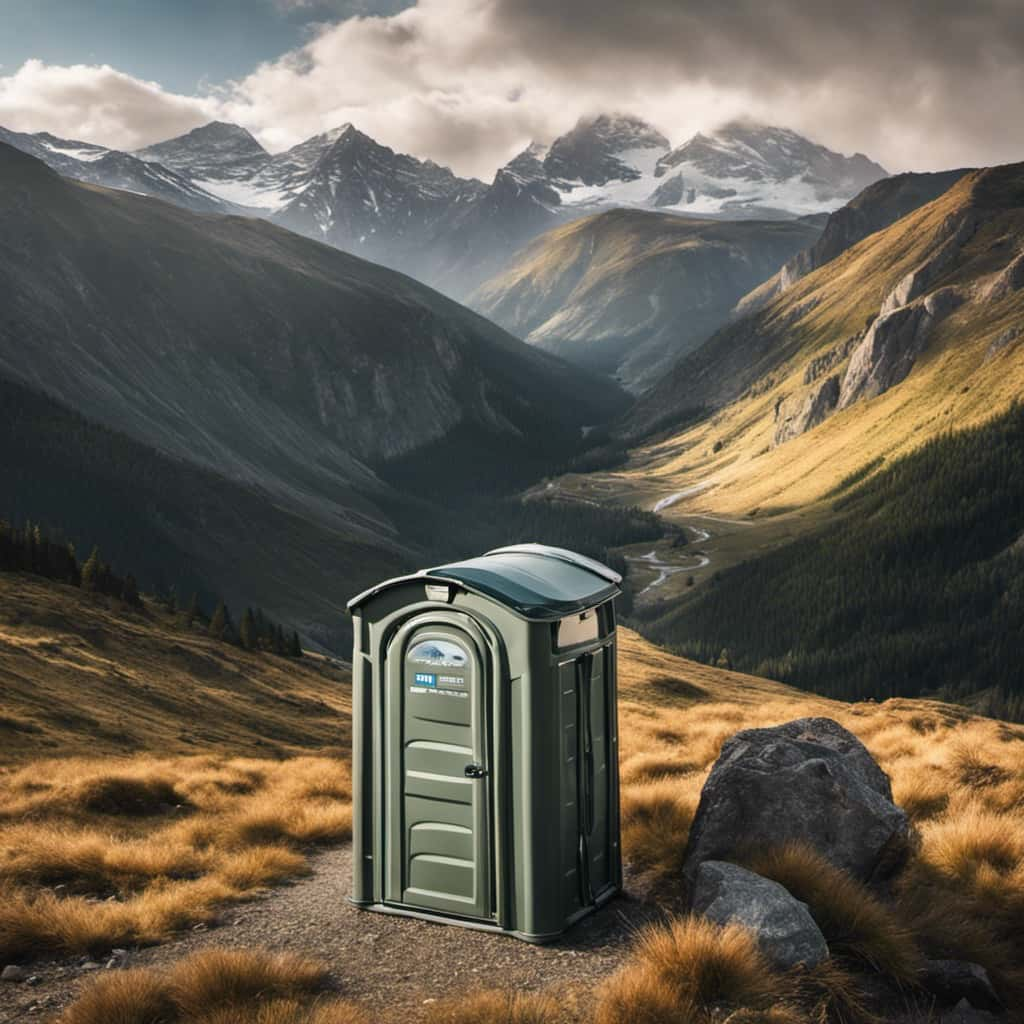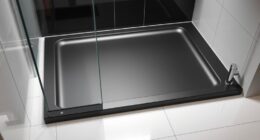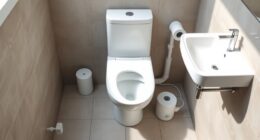We’ve all heard about the benefits of dual flush toilets, but are there any downsides to consider?
Let’s dive into the disadvantages of these water-saving fixtures. With higher initial costs and potential maintenance issues, they may not be the most cost-effective choice.
Limited design options and increased complexity of use can also pose challenges. And if you have an older plumbing system, compatibility can be an issue.
Stay with us as we explore the drawbacks of dual flush toilets.
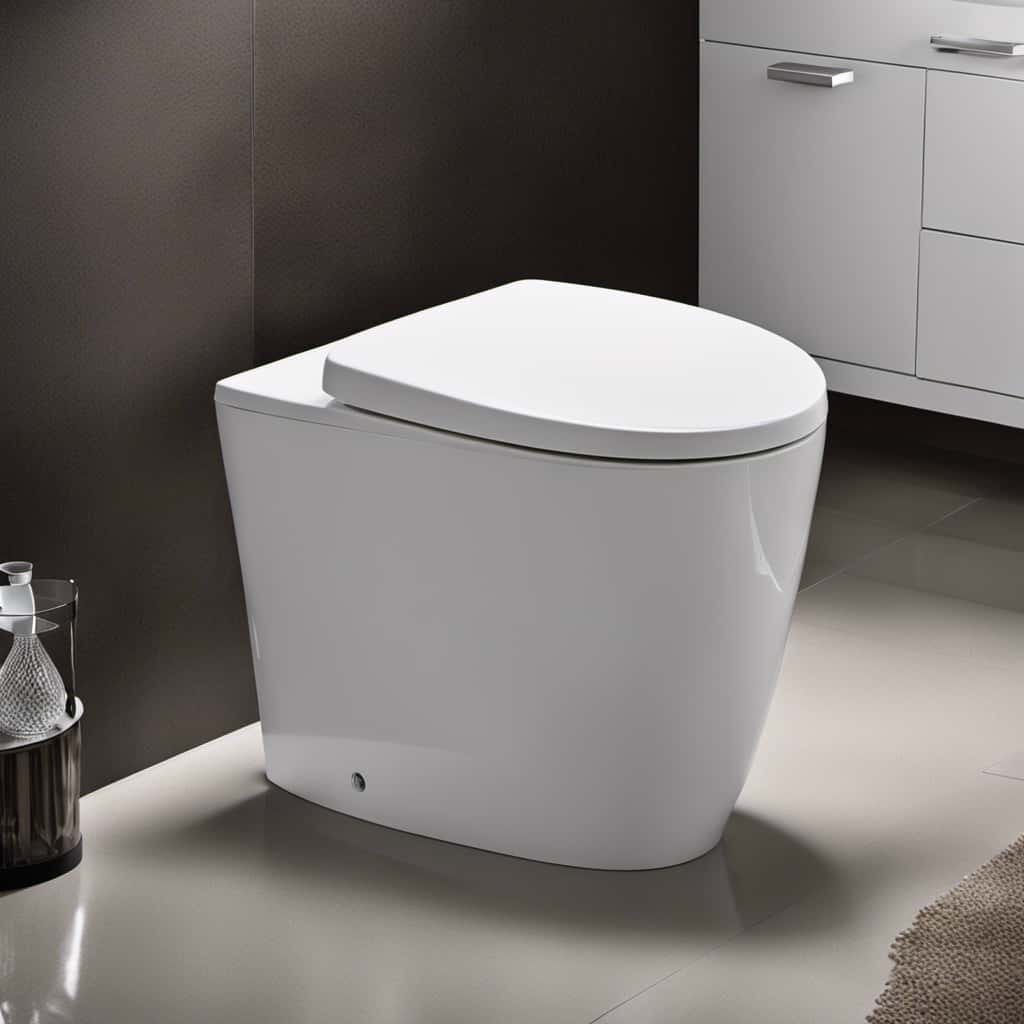
Key Takeaways
- Higher initial costs and installation expenses can be a disadvantage of dual flush toilets, although the long-term savings in water bills can offset these costs.
- Maintenance issues and challenges, such as leaks and the need for regular upkeep, should be considered when choosing a dual flush toilet.
- Limited design options and compatibility with older plumbing systems can make it challenging to find a dual flush toilet that matches the bathroom’s aesthetics and works effectively.
- The increased complexity of use and potential for user confusion may result in increased water consumption, so proper education and clear instructions are important when using a dual flush toilet.
Higher Initial Costs
One disadvantage of a dual flush toilet is the higher initial costs associated with purchasing and installing it. While traditional toilets are generally cheaper, dual flush toilets require a larger initial investment due to their innovative design and water-saving features.
The cost of a dual flush toilet can vary depending on the brand, model, and additional features such as a bidet function or self-cleaning capabilities. Additionally, installation costs may be higher as well, especially if plumbing modifications or professional assistance are required.
However, it’s important to consider the long-term savings that can be achieved with a dual flush toilet. These toilets use significantly less water per flush, resulting in reduced water bills over time. With careful consideration of the initial investment and long-term savings, the higher upfront costs of a dual flush toilet can be seen as a worthwhile investment in water conservation and cost efficiency.
Potential Maintenance Issues
As we continue exploring the disadvantages of a dual flush toilet, one potential issue that may arise is the need for maintenance. While dual flush toilets are designed to be efficient and environmentally friendly, they aren’t without their maintenance challenges.
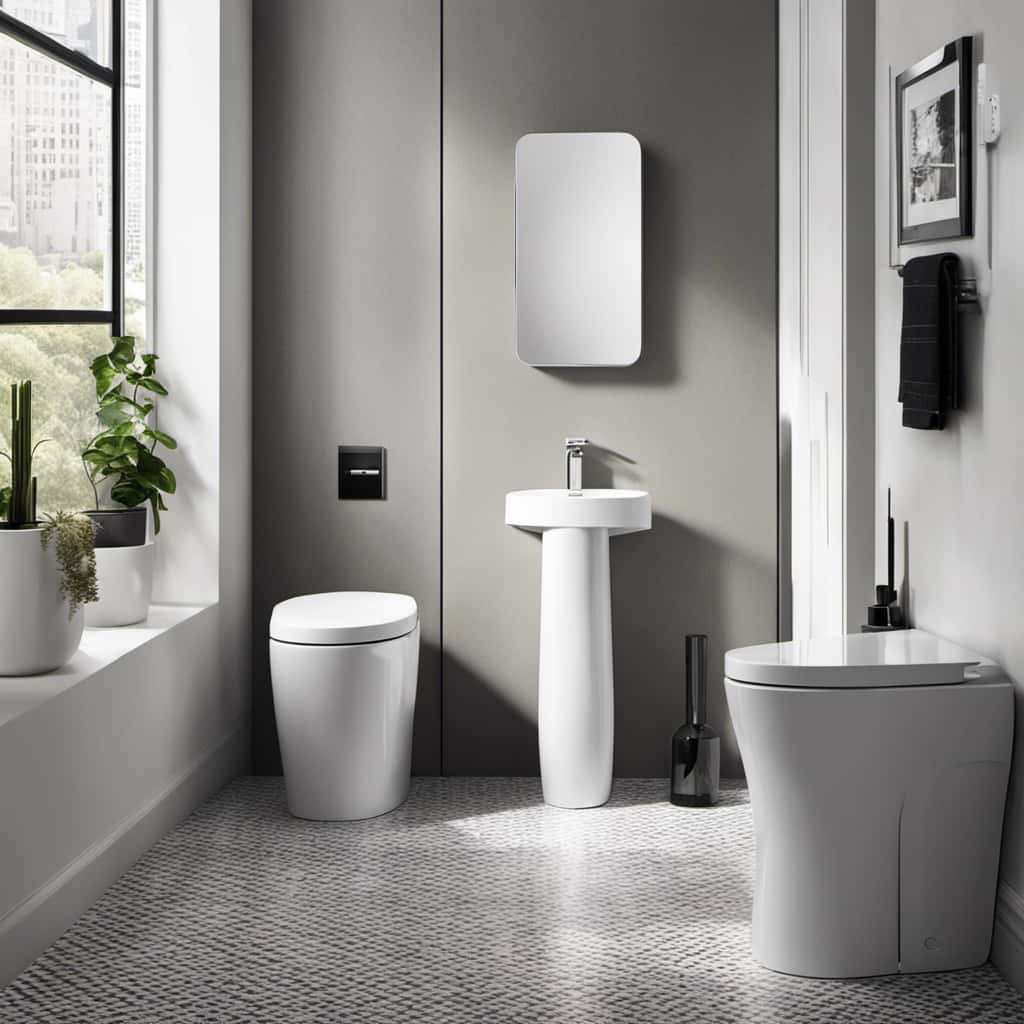
One such challenge is the potential for leaks. The complex mechanisms of a dual flush toilet, including the dual flush valves and water-saving features, can sometimes develop leaks over time. These leaks can lead to water waste, which can be both costly and environmentally detrimental. Regular maintenance, such as checking for leaks and addressing them promptly, is essential to ensure the continued efficiency and effectiveness of a dual flush toilet.
Additionally, proper cleaning and upkeep of the toilet’s components are necessary to prevent any potential maintenance issues from arising.
Limited Design Options
We’ve noticed that one potential drawback of dual flush toilets is the limited range of design options available. While these toilets offer great water-saving benefits, they may not always align with the aesthetic preferences of homeowners.
Here are three reasons why dual flush toilets have limited customization options and aesthetic limitations:
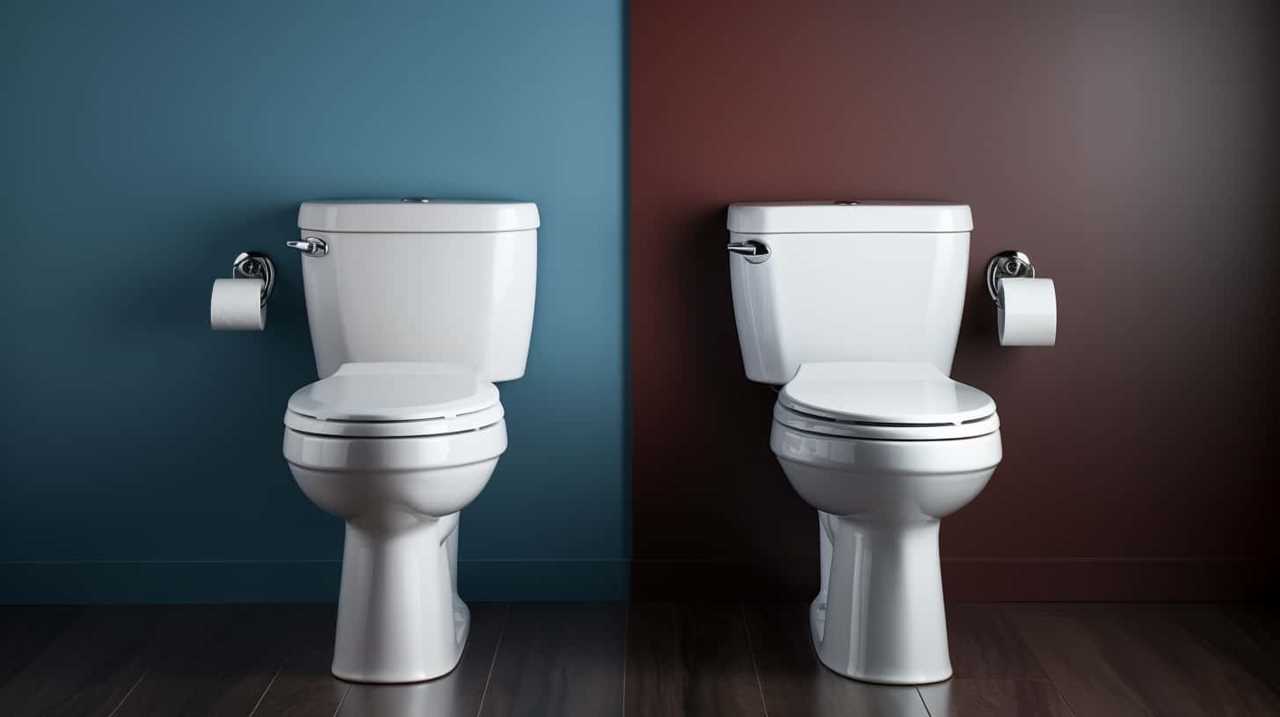
- Standardized designs: Dual flush toilets are often manufactured with a focus on functionality rather than design. As a result, the range of available styles, shapes, and colors is limited compared to traditional toilets.
- Limited accessories: Unlike traditional toilets, dual flush toilets may not have as many accessories available to enhance their appearance. This can make it challenging to match the toilet’s design with other bathroom fixtures and decor.
- Incompatibility with older plumbing systems: Retrofitting an existing bathroom with a dual flush toilet may be challenging due to compatibility issues with older plumbing systems. This can further limit the design options available to homeowners.
While dual flush toilets prioritize water conservation, it’s important to consider the limited customization options and aesthetic limitations when choosing this type of toilet for your bathroom.
Increased Complexity of Use
Using a dual flush toilet can be more complex compared to traditional toilets. While these toilets offer the advantage of water conservation, they also require users to understand and navigate the various flushing options. This increased complexity can lead to user confusion and potentially result in increased water consumption if users are unsure about which flush option to choose.
To illustrate the complexity of using a dual flush toilet, consider the following table:
| Flush Option | Water Consumption (Liters) |
|---|---|
| Full Flush | 6 |
| Half Flush | 3 |
| Dual Flush | Varies |
In traditional toilets, users only have one option – a full flush. However, with dual flush toilets, users must decide between a full flush, a half flush, or a combination of both. This decision-making process can be confusing for some users, leading to a higher likelihood of choosing the wrong option and wasting water.
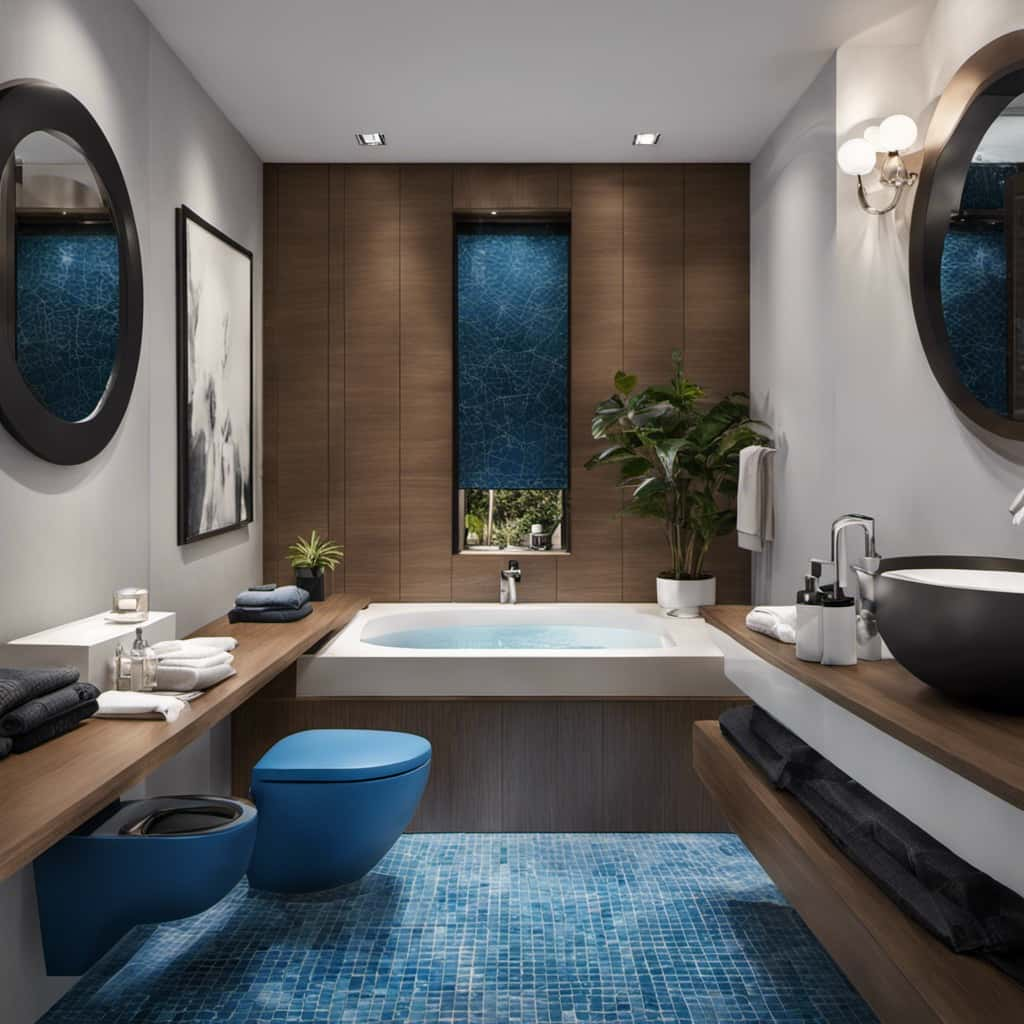
While the complexity of using a dual flush toilet may not be a significant issue for everyone, it is important to consider the potential for user confusion and increased water consumption when making the switch to this type of toilet. Proper education and clear instructions can help mitigate these disadvantages and ensure that users understand how to maximize water savings without sacrificing functionality.
Compatibility With Older Plumbing Systems
One potential disadvantage of a dual flush toilet is its compatibility with older plumbing systems. When considering the installation of a dual flush toilet in an older home, there are a few compatibility concerns that should be taken into account:
- Water pressure: Older plumbing systems may not provide sufficient water pressure to properly operate a dual flush toilet. This can result in incomplete flushing and potential clogs.
- Drainage capacity: Older plumbing systems may have smaller pipes or inadequate drainage capacity, which can lead to blockages and backups when using a dual flush toilet.
- Plumbing modifications: In some cases, installing a dual flush toilet in an older home may require plumbing modifications, such as replacing pipes or adjusting the water supply. These modifications can be costly and time-consuming.
Before installing a dual flush toilet in an older home, it’s recommended to consult with a professional plumber to assess the compatibility of the plumbing system and determine if any modifications are necessary.
Frequently Asked Questions
Are Dual Flush Toilets More Expensive Than Traditional Toilets?
Dual flush toilets are more expensive than traditional toilets due to their advanced technology and water-saving features. However, the advantages of eco-friendliness and water conservation outweigh the initial cost for many environmentally conscious consumers.

What Are Some Common Maintenance Issues That May Arise With a Dual Flush Toilet?
Common maintenance issues with dual flush toilets include leaks, clogs, and valve problems. Troubleshooting tips include checking for loose connections, using a plunger or drain snake for clogs, and ensuring proper water pressure.
Can I Find a Dual Flush Toilet That Matches the Design of My Bathroom?
Yes, you can find a dual flush toilet that matches the design of your bathroom. Many manufacturers offer a variety of styles, colors, and finishes to suit your aesthetic preferences while still providing the installation and benefits of dual flush toilets.
How Difficult Is It to Operate a Dual Flush Toilet Compared to a Traditional Toilet?
Operating a dual flush toilet compared to a traditional one, do users face difficulties? We find that dual flush toilets are generally user-friendly, with clear instructions and intuitive buttons. They may require minimal adjustment but offer water-saving benefits.
Will a Dual Flush Toilet Work With My Older Plumbing System?
A dual flush toilet may not be compatible with older plumbing systems due to its higher water efficiency standards. It is important to consider the plumbing requirements and potential limitations before installing a dual flush toilet.
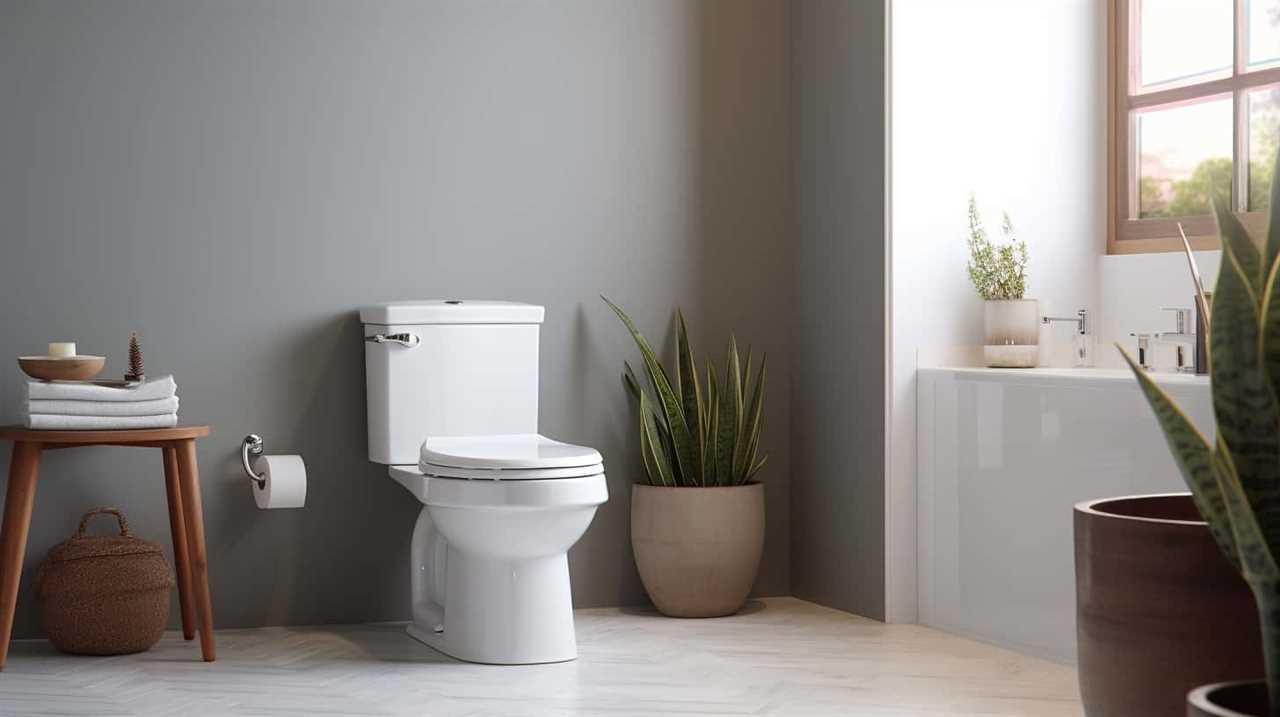
Conclusion
In conclusion, while dual flush toilets offer water-saving benefits, they also come with a few drawbacks.
Higher initial costs may deter some homeowners, and potential maintenance issues can be a hassle.
Limited design options may not appeal to those seeking a specific aesthetic.
The increased complexity of use may confuse some users, and compatibility with older plumbing systems can be a challenge.
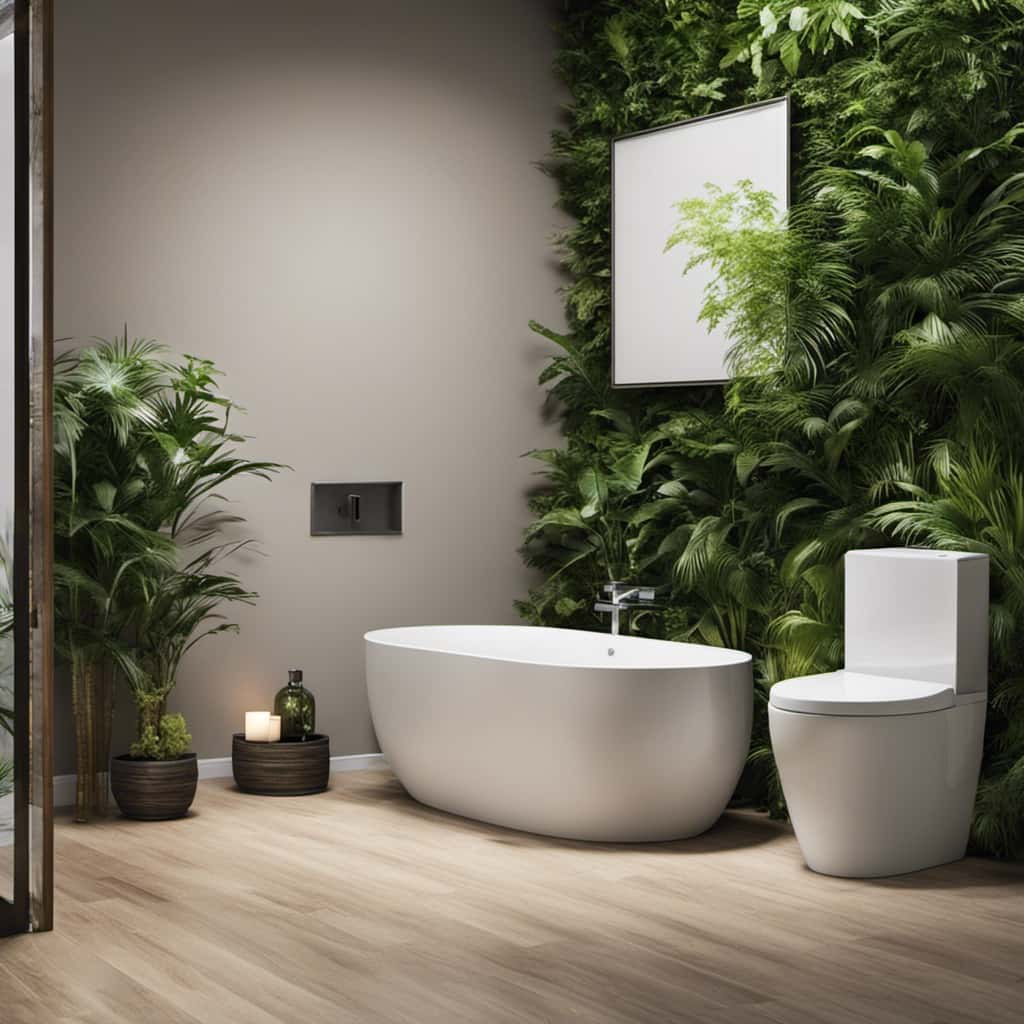
For example, a case study found that a dual flush toilet installed in an older home required expensive plumbing upgrades, adding to the overall cost.






